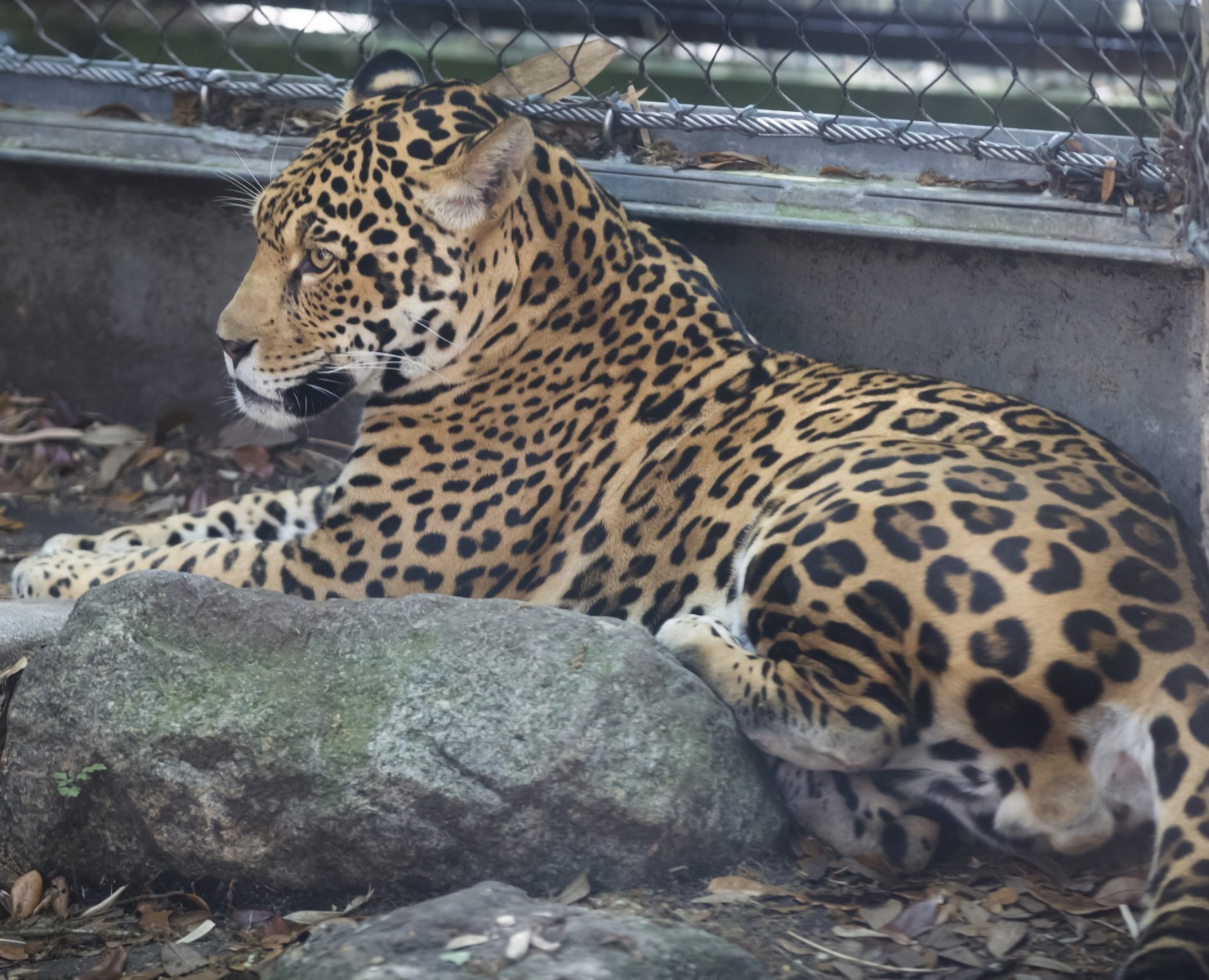Why an Escaped Jaguar Went on a Killing Spree at New Orleans Zoo

Nine animals have died since an escaped jaguar attacked them at the Audubon Zoo in New Orleans on Saturday (July 14). But the jaguar didn't actually eat the animals — including red foxes, alpacas and an emu — so why did it attack so many?
The answer? The 3-year-old male jaguar likely went into a mode known as "surplus killing," in which a predator kills more prey than it can possibly eat at one time, said Howard Quigley, executive director of the jaguar program at Panthera, a global wildcat-conservation organization, who isn't involved with the jaguar at the Audubon Zoo.
"It just means that they go into a kind of excess killing mode," Quigley told Live Science. "There's evidence of mountain lions getting into sheep pens and killing 20 or 30 sheep. When they get the fight reaction, they go and make the kill, and if there's another accessible prey, they go and make the kill again." [On the Lam: 10 of the Greatest Animal Escape Artists]
In the wild, if a jaguar is stalking a deer, tapir or peccary (a pig-like animal), the big cat will make the kill and any other nearby animals will run away — basically to save themselves from becoming the jaguar's second meal, Quigley said.
"But in the confines of a zoo, where most of these animals are visible, the jaguar would attack one and move to the next one and the next one," Quigley said. "It's basically because most predators are hardwired to make a quick kill. And so, when there's a prey that's vulnerable, whether they [the jaguars] have a prey sitting in front of them or not, they [revert back] to that natural reaction, which is to make that kill."
At a news conference on Saturday, Joel Hamilton, the Audubon Zoo's vice president and animal curator, suggested that the jaguar attacked so many animals because it was defending its territory.
"He's a young male jaguar — he was doing what jaguars do," Hamilton said. "Certainly, his behavior wasn't out of the ordinary for that kind of an animal."
Sign up for the Live Science daily newsletter now
Get the world’s most fascinating discoveries delivered straight to your inbox.
But given that two of the animal species were prey — the emu and the alpacas — it's unlikely that the jaguar killed them to defend his territory, Quigley said. However, it is possible that the jaguar pounced on the foxes for that reason, as they are also predatory carnivores, he said.
"You'll see mountain lions that kill coyotes and just leave them, for instance," Quigley said. "[But] I'm not sure how often jaguars might kill a fox in the wild and not eat it."
Scientists have documented jaguars eating at least 40 different types of animals, including deer, peccary, monkeys, birds, frogs, fish, alligators and small rodents. There are cases of jaguars eating foxes, Quigley said, but jaguars aren't known to eat emu — simply because their habitats don't overlap (emus are native to Australia, and jaguars live in the Americas).
Moreover, jaguars don't eat alpacas, which live high in the mountains — jaguars rarely go above 4,000 feet (1,200 meters), Quigley said. [In Photos: A Jaguar Takes Down a Caiman in Brazil]
The escape
A preliminary investigation suggests that a "break in the stainless-steel cable barrier on the roof of the exhibit" potentially allowed enough space for the jaguar to escape, the Audubon Zoo said in a news statement today (July 16).
The jaguar, named Valerio, was born in March 2015 at the San Diego Zoo and transferred to the Audubon Zoo in October 2017, the Audubon Zoo said in the statement. The zoo became aware of his unauthorized whereabouts when a staff member spotted the big cat at 7:20 a.m. local time on Saturday, before the zoo was open to the public for the day.
A team of veterinarians then sedated the cat and returned him to his nighttime enclosure by 8:15 a.m. No humans were injured during the jaguar's escapade.
It's no surprise that the jaguar found the weakness in its enclosure, Quigley said, as it's common for predators to constantly monitor their environments.
"Predators are always looking for vulnerability," Quigley said. "In this particular case, it looks like the jaguar saw the vulnerability and made an escape."
Original article on Live Science.

Laura is the archaeology and Life's Little Mysteries editor at Live Science. She also reports on general science, including paleontology. Her work has appeared in The New York Times, Scholastic, Popular Science and Spectrum, a site on autism research. She has won multiple awards from the Society of Professional Journalists and the Washington Newspaper Publishers Association for her reporting at a weekly newspaper near Seattle. Laura holds a bachelor's degree in English literature and psychology from Washington University in St. Louis and a master's degree in science writing from NYU.









